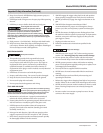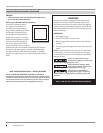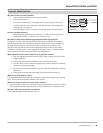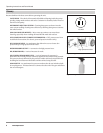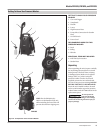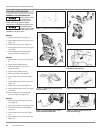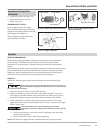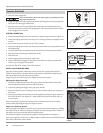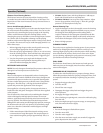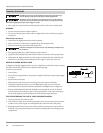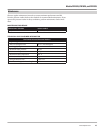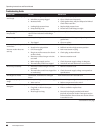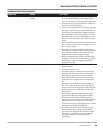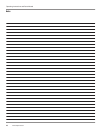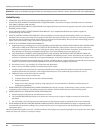
Distance From Cleaning Surface
The distance between the spray tip and the cleaning surface
is another factor that affects the impact force of the water. The
impact force of the water increases as the tip is moved closer to
the surface.
How to Avoid Damaging Surfaces
Damage to cleaning surfaces occurs because the impact force of
the water exceeds the durability of the surface. You can vary the
impact force by controlling the spray tip angle to the cleaning
surface and the distance from the cleaning surface and by
changing the spray tip. NEVER use a narrow high impact stream
on a surface that is susceptible to damage. Avoid spraying
windows with a narrow high impact stream. Doing so may break
the window. The most sure way to avoid damaging surfaces is to
follow these steps:
1. Before triggering the gun, make sure the quick connect tip
you are using is appropriate for the application.
2. Place the spray tip approximately 4-5 feet (1,22-1,52 m) away
from the cleaning surface. Then hold the lance and spray tip
at a 45 degree angle to the cleaning surface. Trigger the gun.
3. Vary the fan pattern spray angle and the distance to the
cleaning surface until optimum cleaning efficiency is
achieved without damaging the surface.
DETERGENT APPLICATION
NOTE: Use only detergents formulated for pressure washers.Test
detergent in an inconspicuous area before use.
Detergents
The use of detergents can dramatically reduce cleaning time
and assist in the removal of difficult stains. Many detergents are
customized for pressure washer use on specific cleaning tasks.
Pressure washer detergents are as thick as water. Using thicker
detergents – like dish soap – will clog the chemical injection
system and prevent the application of the detergent.
Once applied to a cleaning surface, detergents take time to
break down dirt and grime. Detergents work best when applied
at low pressure.
You can effectively clean surfaces by combining the chemical
action of detergents with high pressure rinses. On vertical
surfaces, apply the detergent starting at the bottom and work
your way upward. This method prevents the detergent from
sliding down and causing streaks. Begin high pressure rinsing at
the bottom and work your way upward. On particularly tough
stains, use a brush in combination with detergents and high
pressure rinsing.
1. Follow manufacturer’s label directions for mixing correct
concentrations of soap/detergents. The soap detergent to
water ration through the pump is approximately 10% (1 to
10).
13
Models PW1625, PW1825, and PW1835
www.chpower.com
Operation (Continued)
u PW1625: Replace lance with Soap Dispenser. Add soap to
bottle and reattach bottle to soap dispenser.
u PW1825 & PW1835: Pour soap into soap container. Adjust
lance to Soap position (refer to page 7, “How do I get high
pressure?”,fordescriptionofsoapuse)
General Cleaning Tips
1. Apply the detergent so that it thoroughly covers the cleaning
surface. Apply the detergent from bottom to top to prevent
the detergent from sliding down and streaking. Wait a
couple of minutes for the detergent to break down the dirt
and grime. Use a brush to lightly scrub heavily soiled areas.
Never allow the detergent to dry on the cleaning surface.
2. Rinse with high pressure.
CLEANING POWER
The easiest way to regulate the cleaning power of your pressure
washer is by changing the distance from the surface you are
cleaning. Begin spraying with a wide fan pattern while standing
several feet from the surface. Slowly move closer to the object
you are cleaning, adjusting the spray pattern as necessary, until
you find the most effective cleaning technique.
FINAL RINSE
The final rinse should start at the bottom and work upward.
Make sure that you thoroughly rinse the surface and that you
remove all detergent.
PRESSURE RELIEF PROCEDURE
To reduce the risk of bodily injury or property damage, always
follow this procedure whenever spraying is stopped, when work
is completed, and before checking or repairing any part of the
system.
1. Engage the trigger safety latch.
2. Turn the unit off.
3. Shut off the water supply.
4. Disengage the trigger safety latch and trigger the gun to
relieve pressure.
5. Re-engage the trigger safety latch.
6. When checking or repairing unit, remove the wall outlet plug
from the wall.
7. Before overnight storage, long term storage, or transporting
unit, disconnect the water supply.
SHUTDOWN
1. Be sure all detergent is flushed from system.
2. Turn the motor OFF.
3 Turn the water supply OFF.
4. After the motor and water supply are turned off, trigger the
gun to depressurize the system.



